In cats, as in humans, the physiological norm is to breathe through the nose. It is not uncommon to see a cat breathing with its mouth open and its tongue stuck out like a dog. At the same time, it is noticeable that this way of breathing involves abdominal muscles: the cat breathes not the chest, but the abdomen.

- Fast breathing in a cat: what is it?
- Diagnosis
- Treatment
- Why does my kitten have frequent breathing?
- 1. Respiratory problems
- 2. Pleural effusion
- 3. Upper airway obstruction.
- How is the problem diagnosed?
- Why is the cat breathing frequently?
- Pathologies accompanied by rapid breathing
- What the cat's owner should do
- Types of shortness of breath
- Dyspnea is caused physiologically
- Prevention and care for the animal
- Pathological causes
- Pulmonary edema
- First aid
- Professional help
- Uneven breathing in a pet – the owner's actions
Fast breathing in a cat: what is it?
Rapid breathing in cats is not exactly a common sight, although it can often be seen in dogs. But somehow with dogs everything is clear and familiar. But with cats.
That is why, noticing rapid breathing in his cat, the owner begins to noticeably nervous.
Rapid breathing is usually accompanied by a protruding tongue and shallow, frequent inhalations/exhalations with an open mouth.
Rapid breathing in a cat is not usually seen as normal.
However, cats can still be seen breathing rapidly after long, tiring games, when stressed and even in moments of fright.
In some cases, rapid breathing may be harmless for cats, but in others it may be a sign of serious heart disease or metabolic problems.
Rapid breathing can be seen as common in young cats exhausted after exhausting playtime.
Sometimes excessive heat and humidity can cause rapid breathing. Cats don't sweat like humans do when fighting the heat, and the very small areas of skin on the pads of their paws and ears are designed for cats to evaporate moisture.
So rapid breathing is a way for cats to reduce the heat of an overheated body. Cats do not often drive themselves to exhaustion in hot weather, so you rarely see a cat breathing fast.
If you notice a cat breathing fast on a hot day, check the color of its tongue. A normal, pink tongue color indicates that the cat has overheated.
However, if the tongue is dark or blue, take the cat to the veterinarian because the cat may have the following disorders:
A fast breathing cat may have upper airway problems such as: stuffy nasal passages or a neoplasm in the nasal cavity or pharynx. There may also be lower respiratory problems such as gas exchange disorders, pulmonary edema or even asthma.
Rapid breathing can be caused by many heart conditions: heartworm lesions, thrombosis, or even a heart attack. Rapid breathing is often a sign of a pulmonary embolism.
Diagnosis
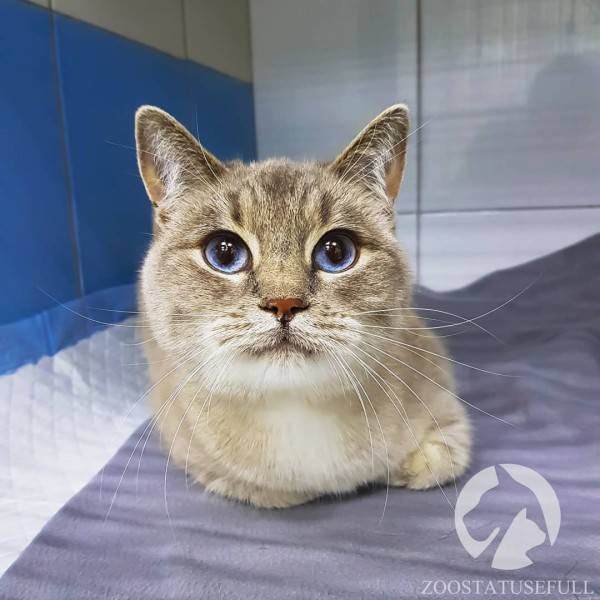
To determine whether a cat has rapid breathing or not, you need to know its normal breathing rate. You can determine this at home – observe the pet while it sleeps or during a period of prolonged quiet. The cat should lie on its side, observe the movements of the abdomen – when it moves upward, a breath is taken. Count the number of breaths in 1 minute, repeat the procedure 2-3 times. This number will be the norm for your pet. The normal respiratory rate in cats is 20-30 breaths per minute (kittens may be higher).
First of all, it is necessary to eliminate factors that may provoke the development of tachypnea in a cat (heat, stress, physical activity). If the tachypnea persists, and/or the symptoms intensify or are present for an extended period of time, a veterinarian should be consulted.
A standard examination includes general and biochemical blood tests and urinalysis. These will help to identify conditions associated with rapid breathing such as anemia, infection and diabetes.
- Thyroid hormone (T4) levels in all cats over the age of six;
- a test for leukemia and immunodeficiency virus;
- arterial blood gas analysis to evaluate the patient's balance;
- chest radiographs. Sometimes a neck X-ray is needed to identify foreign bodies or tumors in the upper airway;
- an ultrasound of the heart and chest cavity;
- thoracentesis (taking fluid, air, or tissue from the chest cavity), fluid analysis, or cytology.
A more detailed diagnosis may include rhinoscopy, bronchoscopy, and CT scan.
The most life-threatening causes and those pathologies that occur frequently in cats are ruled out first. Some diagnoses can only be determined by exclusion.
Treatment
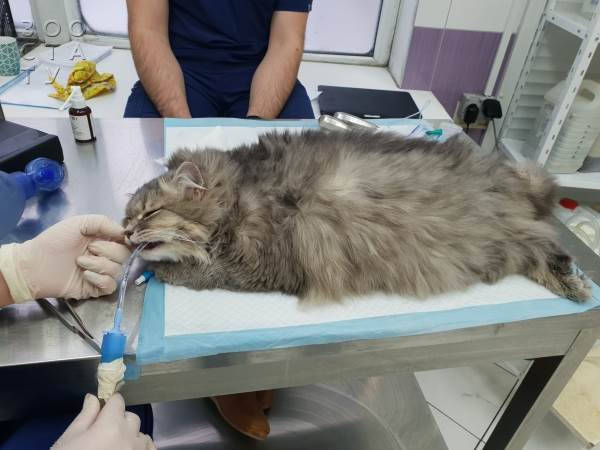
Treatment will depend on the original cause that provoked the cat's rapid breathing.
Symptomatic therapy should be carried out during the search for the underlying cause. It includes oxygen therapy, antibiotics or anti-inflammatory drugs for animals with infectious or inflammatory diseases, infusion therapy for dehydration or associated systemic diseases.
Why does my kitten have frequent breathing?
Kitten's breathing is rapid for a variety of reasons. If your beloved feline friend seems to be breathing more frequently than usual, you should take him to the vet as soon as possible.
1. Respiratory problems
Kittens may begin to experience rapid breathing due to respiratory problems. According to some studies, this condition impairs a kitten's ability to supply oxygen to the bloodstream, causing him to breathe faster and requiring more effort to try to neutralize it. Respiratory diseases include:
The most common type of rapid breathing. – Pulmonary edema. This condition creates fluid around the lungs. It is caused by cardiac arrest. However, it can also occur with electrocution, cancer, choking, and other systemic illnesses.
2. Pleural effusion
Kittens can also suffer from fluid buildup in the chest area, which is bounded by the lungs. This occurs in an area called the pleural cavity. When fluid forms in this area, the lungs cannot expand as much as they normally should. The kitten will begin to have difficulty breathing as the fluid fills this area. Also, pleural effusion can be caused by the following:
3. Upper airway obstruction.
Kittens can also develop an upper airway infection. Symptoms include:
Some kittens may suffer from nasal congestion, which makes it difficult for them to breathe through their nose. In this case, the kitten may touch her mouth to breathe freely. This is a good time for proper home care for kittens with rapid breathing. Moisten nasal secretions with warm water and cotton swabs. . Place them in a humid place, such as the bathroom, and turn on the hot water. You can also use air humidifier. If the kitten loses her appetite and seems lethargic, take her to the vet for a proper examination.
How is the problem diagnosed?
A veterinarian can diagnose the problem based on a physical exam. X-rays may be required. If the kitten has severe rapid breathing, this test may not work for him. In kittens with pleural effusion, the veterinarian should take a sample of fluid coming from the chest area. This will help them clearly identify the problem. However, your friend will not be comfortable with this process.
In the case of heart failure, the veterinarian may suggest that your kitten undergo an echocardiogram. This is an ultrasound of the heart that allows many types of heart activity to be evaluated. Asthma is also diagnosed with a chest x-ray, but if the condition is serious, your kitten may be referred for a bronchoscopy if necessary. For airway obstruction and nasopharyngeal polyps, the kitten may need sedation for an oral exam, and x-rays of the neck, ears and skull.
The veterinarian will also perform a complete physical exam, which includes listening to the heart and lung sounds for possible cardiac abnormalities or fluid accumulation in the lungs. A medical history will also be obtained from the owner, including the onset of symptoms. Some diagnostic tests may also be performed, such as:
- General Blood tests, urinalysis to detect any possibility of infection, anemia and organ failure
- Ultrasound to evaluate the liver , heart and lungs for any signs of inflammation, tumors, obstruction and fluid.
- Biochemical profile
- Echocardiogram to see the size of the heart and look for possible cardiac helminths.
- Thoracentesis.This is a procedure in which fluid is removed from the pleural cavity to make it easier for your kitty to breathe, and the fluid can be tested in the lab.
- Blood tests to assess the level of carbon dioxide in the bloodstream and the level of oxygen
- Antibodies Against Heartworm
- Blood tests to check thyroid hormone levels in the blood, especially if there are any signs of hyperthyroidism.
Why is the cat breathing frequently?
If there is nothing wrong with her, it could be from the heat or from stress. So, for example, quickly breathe, opening the mouth, cats that have never been outdoors and they were taken there for some reason.
The cause can also be a variety of pathologies and diseases. The most common causes of such breathing are cardiomyopathy, asthma, lung and bronchial diseases.
AntiKot nets – AntiKot.ru – We have been working since 2008. – The creators of anti-cat nets. – Term. – 23 Oct 2021 – antikot.ru
More often than not, this condition is accompanied by a high emotional state of the cat. There are many reasons that cause rapid breathing in a healthy cat. They include: – unexpected fright; – overexcitement; – stress; – dehydration; – active games; – overheating, etc. Difficult or rapid breathing in such situations is considered normal. After some time the rhythm of breathing. Read more
It depends on a situation. Sometimes it is because the animal is banal hot. But there are also more serious reasons, especially if the shortness of breath does not pass for a long time. Reaction to medications, diseases, injuries – all this can be the cause. Such an animal should definitely be shown to the veterinarian.
It may be due to increased activity or uncomfortable temperature conditions, also cats with shortened muzzle may breathe with their mouths open after exertion. But sudden and unexplained panting or shortness of breath that does not go away for a long time is a reason to seek immediate help at the veterinary clinic.
Resting respiratory rate is a very important indicator of your cat's respiratory and cardiovascular system. It is important to remember that breathing rate should be counted at rest, not after play or stress. The normal rate is considered to be from 20 to 30 breaths per minute.
Pathologies accompanied by rapid breathing
Causing frequent, heavy breathing in a cat can cause health problems, including:
- Diseases of the throat (bronchitis, laryngitis, asthma), in which air does not flow well through the larynx.
- Infectious diseases in which the nasal mucosa swells and fluid flows profusely from the nose.
- Lung diseases that make it difficult to breathe.
- Heart failure. In some cardiovascular diseases, due to lack of oxygen, the cat may have shortness of breath and breathe heavily on its sides and abdomen.
- Shock condition – the cat breathes deeply and often, as if trying to get more air into the lungs.
- Severe dehydration or overheating. If the cat is hot, it starts breathing frequently and its abdomen is heaving.
- Damage to the mucosa of the mouth or pharynx.
- A foreign body blocking the airway. In addition to heavy, irregular breathing, there may be wheezing.
- Allergy to the vaccine.
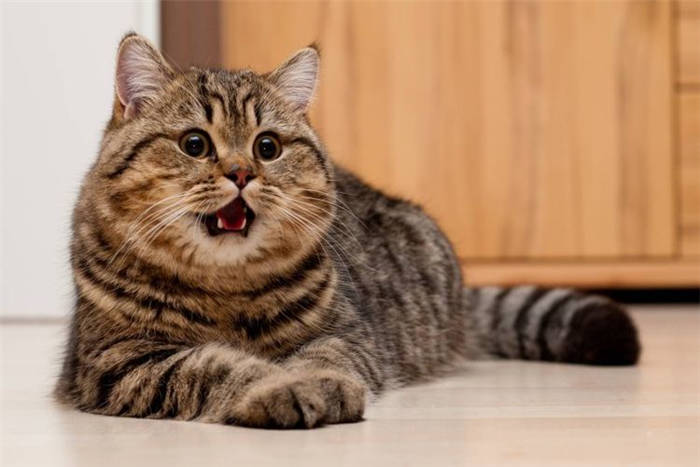
Warning. Reaction of the cat's immune system to the vaccine preparation is usually observed 15-30 minutes or sometimes 2-3 hours after introduction. Therefore it is recommended that vaccinated animals should be left for several hours in a veterinary clinic under observation by a doctor, who will be able to help the animal if necessary: to give antihistamines, anti-shock therapy.
What the cat's owner should do
If your cat is carrying her offspring, rapid breathing can be a sign of an imminent birth, then you don't need to do anything. If your cat is sticking its tongue out and breathing frequently, and you know that it is frightened by something, or that it has just run around a lot, or is obviously suffering from heat, you can try to relieve it by putting it to rest in a cool place.
If it looks as if the cat is choking, try to move its jaws apart and remove the foreign body with your fingers or tweezers. Alternatively, you can lift the cat by its hind legs and, pressing with the other hand on the belly near the diaphragm, try to squeeze the foreign body out.
But if the cause of rapid breathing is unclear to you, and especially if the shortness of breath is accompanied by symptoms such as rapid pulse, fever, wheezing in the chest, discharge from the mouth or nose, swelling or redness of mucous membranes, general lethargy, lack of appetite – do not lose time, you must immediately show the animal to the doctor. The speed of assistance depends on how fast and effective the result will be.
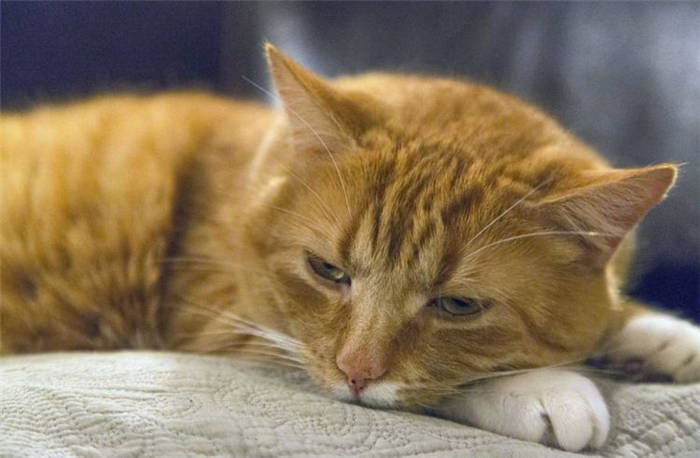
Important! Even in critical cases, the owner of the pet can provide first aid to his pet. If the cat's breathing is not only frequent, but also intermittent, and it is clearly visible that she is suffocating, before the vet arrives, you need to give her artificial respiration. To do this you should put the cat with its back turned down on a flat surface, if necessary clean its mouth from mucus and then, folding the palm of your hand into a tube, blow air into the cat's nose every three seconds. This should be done carefully so that too strong a jet of air does not damage the lungs.
When the vet sees the cat, he will examine the animal, ask the owner about the alleged causes of frequent panting, take the cat's temperature and, if necessary, the blood pressure (it usually drops a lot in shock).
Types of shortness of breath
- The appearance of specific whistling and wheezing sounds;
- the cat grabs air with its mouth open, but it does not exhale fully;
- the animal assumes an uncharacteristic (forced) posture, tries to lie down, but begins to pant;
- breathing is not natural for the cat – through the mouth (this provokes the pallor of the mucous membranes of the mouth and its dryness), cyanosis is noted.
Depending on the disease that provoked the shortness of breath, there are several types:
- rare breathing – bradypnoe. This type occurs when the functional features of certain centers located in the brain are insufficient;
- frequent breathing – tachypnea, characterized by shallow breaths and exhalations that occur during pathological blood conditions and febrile states .
Dyspnea is caused physiologically
The physiological type of dyspnea in cats develops as a result of natural life processes and there is no need for specialized treatment to eliminate it. Dyspnea, which occurs under stress factors or unfavorable conditions, disappears on its own, and the cat's breathing returns to normal.
The main causes of the development of physiological shortness of breath in domestic cats are:
- Stresses and psycho-emotional stress. Shortness of breath develops against the background of the secretion of an excessive amount of the hormone – adrenaline, into the systemic bloodstream. This hormone provokes increased work of the myocardium. Against this background, the need for oxygen increases sharply, and to make up for the lack of it, the animal breathes heavily and frequently, opening its mouth.
- Stresses of the body of the physical type. During active play, fast running and jumping, the heart muscle contracts faster and the necessary oxygen is consumed faster. In order to compensate, the animal breathes more frequently than when it is at rest. A similar response is seen when the body overheats.
- Damage to the thorax. If the animal breaks its ribs as a result of mechanical trauma, it experiences pain, in turn provoking a state of stress. The cat against the background of pain begins to breathe frequently and shallowly, opening its mouth. In such cases you should not hesitate and it is important to go to the veterinary clinic for professional help.
Physiologically determined shortness of breath has a number of characteristic signs. Every owner should know what symptoms are characteristic of physiological dyspnea, in order to distinguish it from pathological in a timely manner. Thus, the signs of physiological dyspnea are:
- Polydipsia ( increased thirst) – the cat drinks a lot of water after vigorous exercise, jumping and running, after playing and also breathing heavily;
- Restlessness – The cat may show obvious signs of anxiety, its pupils are dilated and its breathing is labored (an obvious sign of stress, the cat may have been running away from an angry enemy);
- Lethargy and apathyLethargy and apathy – if overheated in direct sunlight the cat tries to find a cool place and seems lethargic, breathes quite often and superficially.
Prevention and care for the animal
It is impossible to completely exclude problems with the respiratory system, but the probability of their occurrence can be reduced. To do this, it is necessary to adhere to the following recommendations:
- Purchase a humidifier and arrange regular airings. This will help to avoid dryness and stuffiness in the room – and will be useful to all the inhabitants of the apartment.
- Get a bowl for your pet to eat slowly – or rethink his feeding routine. Avoid taking too many breaks in excess of 12 hours.
- Eliminate factors that cause allergies and stress. Do not smoke indoors and use mild sedatives before going to the vet if the pet is too nervous.
- Monitor weight. If the pet's weight deviates more than normal, don't be lazy to put him on a diet or increase his activity.
- Do not keep potentially dangerous products in an easily accessible place.
- Install protective "anti-cat" sheeting on windows. Contrary to popular belief, cats can be injured even if they fall from a small height.
- Follow the vaccination schedule and give your pet timely worming preparations.
- Do not neglect annual checkups. Preventive examinations at the veterinary clinic will help detect internal disorders before complications arise. If your pet is at risk, the frequency of visits should be every six months.
Special attention should be paid to brachycephalic cats. It is contraindicated for such pets to be kept at high temperatures, as well as too much physical activity.
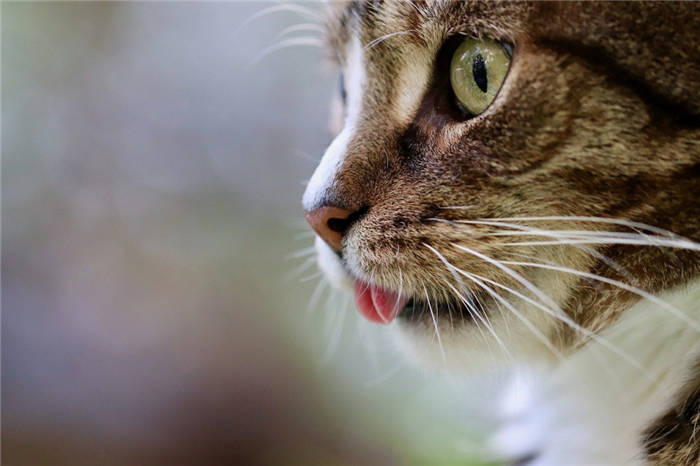
If the cat is breathing heavily and strangely – do not leave it unattended. Note the accompanying symptoms and try to determine the cause of the disturbance. Follow up on the level of danger. Remember, self-help is effective only in the absence of pathology. In all other cases, you will have to go to a specialist.
Pathological causes
Rapid breathing with an open mouth and sticking out the tongue indicates a lack of air in the cat's body – oxygen starvation. If the natural causes of this condition are eliminated, and the cat continues to breathe too frequently, do not hesitate to show the animal to a specialist.
Pulmonary edema
When they talk about pulmonary edema, they mean an excessive accumulation of fluid in the tissues of the organ. It is not an independent disease but a symptom. In cats, pulmonary edema may develop for two reasons: cardiogenic (edema provoked by some cardiac pathology) and non-cardiogenic – caused by an external influence.
- ingress of hot air into the airways;
- reaction to medications, including anesthesia
- allergy;
- consequences of pneumonia or asthma;
- food poisoning or inhalation of poisonous fumes;
- renal failure;
- head trauma with damage to the brain and its membranes;
- blood poisoning;
- sun stroke, heat stroke or electric shock.
Pulmonary edema develops very quickly, and if urgent rescue measures are not taken, the cat may die. This condition has pronounced symptoms and is easy to identify:
- the cat dramatically loses strength and stops responding to external stimuli;
- It is noticeable that the animal has difficulty breathing;
- The animal is coughing, breathing with its mouth ajar, and sticking out its tongue;
- mucous membranes rapidly turn pale, later turning blue;
- Coughing produces a pinkish sputum, the result of trauma to the alveoli;
- Initially, a fast heartbeat weakens and becomes intermittent;
- The cat's paws become cold as a result of impaired peripheral circulation.
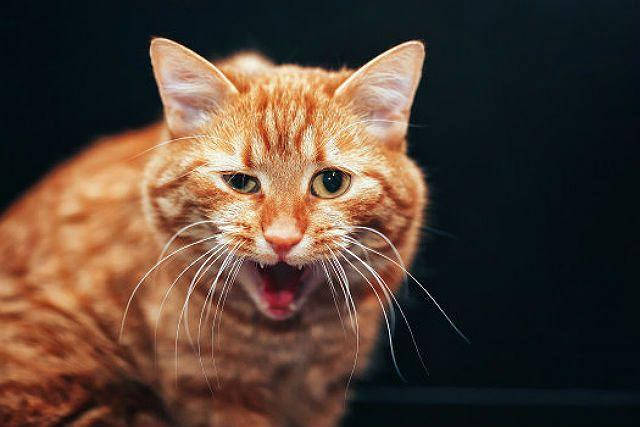
First aid
Alarm and concern of the owner of the cat, in addition to the private signs listed above, should cause the following symptoms, common to all conditions that threaten the life of the pet:
If, in addition to difficulty breathing, these symptoms are present, the most effective aid to the pet will be to get him to a clinic as soon as possible or to call a doctor at home. During transportation or while waiting for help, the cat should be laid on its side and its mobility should be restricted as much as possible.
Remember – no time should be wasted and no time should be wasted. Prolonged hypoxia leads to irreversible changes in the brain, which will lead to the death of the pet.
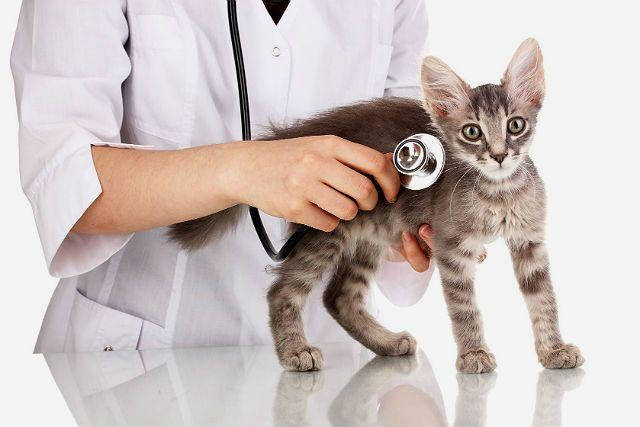
Professional help
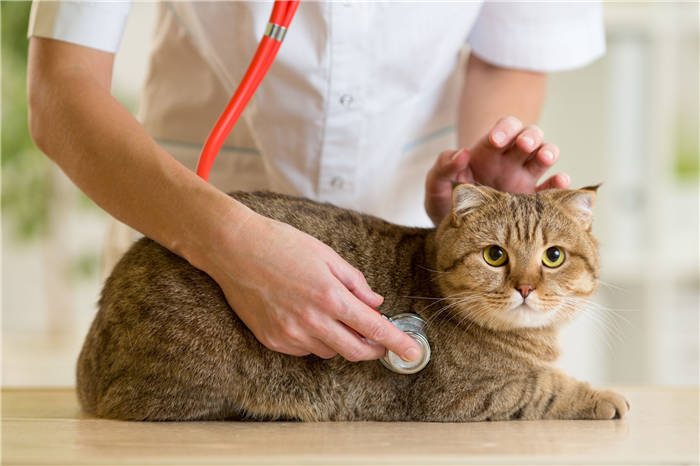
If a cat with rapid breathing comes to the vet for an examination, first of all, the owner of the whiskered creature should be told about the possible causes of the problem and together with the vet to rule out physiological factors. After a thorough examination of the pet, the vet will work according to the following pattern:
- Determine the temperature readings of the sick whisker, which will help confirm or rule out the infectious nature of the ailment;
- make referrals for biochemical and clinical blood tests, which are necessary to detect anemia, diabetes or infections;
- identify the presence of worms (if any);
- to exclude neoplasms in the chest area, heart and peritoneal problems – the doctor will give a referral for ultrasound and X-rays;
- in especially severe situations thoracentesis may be required, when the chest wall is punctured, which helps to detect the presence of excess air or fluid in the organs;
In most cases of trauma and cancer, surgical intervention is necessary. In other situations, drug therapy is prescribed, which depends directly on the diagnosis made by the specialist.
In a state of shock (rapid drop in blood pressure), the pet needs to quickly restore respiratory rhythm, which is done with adrenaline therapy, infusion therapy, various diuretics, corticosteroids, as well as analgesics.
Uneven breathing in a pet – the owner's actions
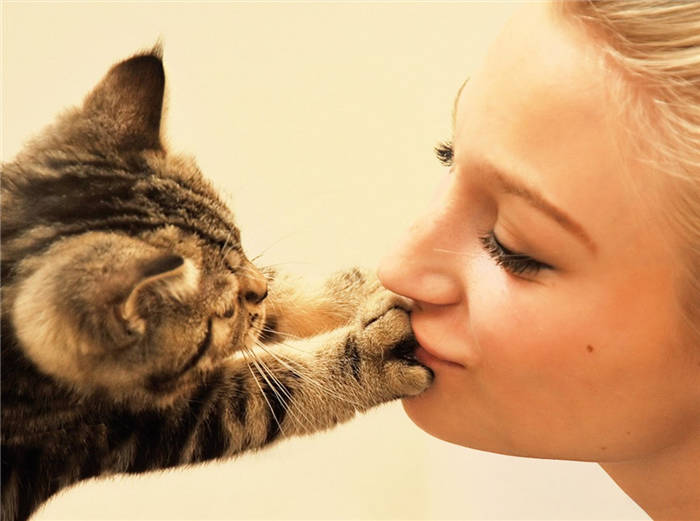
There are cases when the pet's breathing becomes more frequent, and after a while it disappears altogether. With such a problem, a change in the shade of mucous membranes from pink to blue can be observed. To help the whisker, the owner should act according to the following algorithm:
- The pet should be fixed on a table or any other flat surface. The line from the neck to the end of the spine should be straight.
- Next, examine the oral cavity of the whisker and clean it of mucus, saliva and other objects.
- Curl your palm into a tube (through it you will inhale air).
- Take a deep breath and exhale through the tube from the palm into the pet's nose. You can cover the cat's nasal cavity with a thin cloth and exhale through it, then you don't need to use the palm.
- Breathe air into the cat's nose every three seconds, but don't overdo it, as too much air can have a detrimental effect on the lungs.
During the process, do not forget to monitor the whisker's pulse; if it is absent, indirect heart massage should be performed.
The above actions can save the life of your beloved creature, so do not wait until the doctor arrives – act confidently and quickly. Subsequent therapy should be supervised by a qualified specialist.






